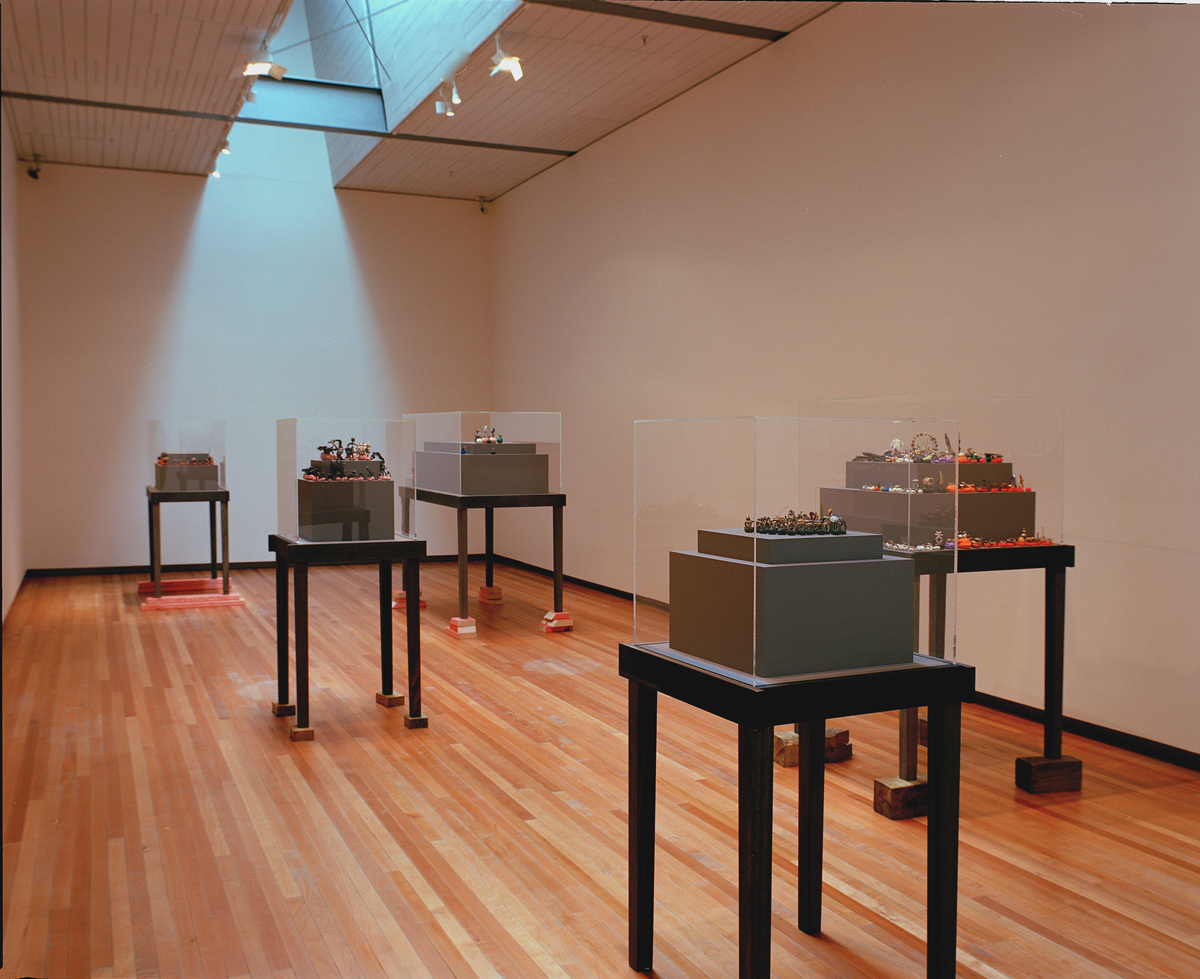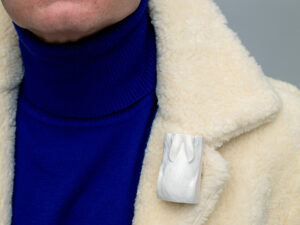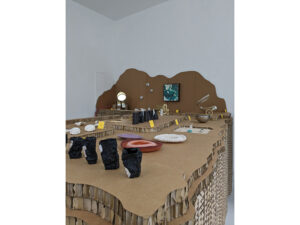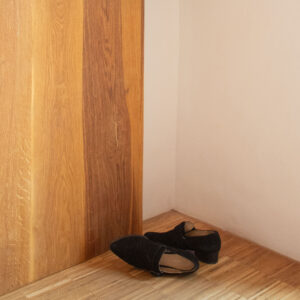The recent renovations at the City Gallery, Wellington have seen some significant changes, particularly the Hirschfeld Gallery. This gallery is for the exhibition of local artists and used to be an odd lower-case, T-shaped space tucked in beside Nikau Café. This location, next to a bustling Wellington food venue, seemed to reflect the diverse shows that were installed there. Now located upstairs, deep in the body of the gallery, it seems to have acquired a more serious atmosphere.

One case holds the breakthrough piece that Hermann Jünger (Fritsch’s renowned professor at the Munich Academy of Art) criticized: a mound of silver with delicate curls of gold wire poking through the surface, which led to Fritsch’s absence from the Academy for one year. Every piece has its own story and identity. These are pieces that he holds close like family. Each work is important for the benchmark it charts through his career. Many artists retain these significant works, but few recognize the importance of holding onto the pieces that do not, through their making or in their finished state, satisfy or speak their intent. In this show we are privileged to see that Fritsch values these for the message that he is yet to comprehend. His patience and openness in keeping these pieces until he is able to appreciate their idiosyncratic message is a most valuable insight into how to view artwork, but also a tease: which ones are they?
For the viewer, the crowded environments form a fascinating and sometimes frustrating view of the incredible creative drive behind their making. A visit to the exhibition offers the chance of coming face to face (or nose to fogged-up glass) with familiar pieces, long known from the catalogs that always seem to represent Fritsch’s work so superbly. Some pieces in the ‘flesh’ are small and quietly powerful, characteristics we understood from the images. Others within the crowd seem shy and reticent. Then there are those that jump out with a new and special vigor. There are also plenty of pieces not seen before that evoke a range of reactions, from instant desire to – I was going to say apathy or dislike, but must now amend that to incomprehension.

Other reviews of this exhibition have made mention of Fritsch’s subversion of the vitrine with blocks of wood left over from the gallery’s own recent rebuilding program. Perhaps this was the artist’s way of reducing the status of the cases and the austerity of the lofty room, but as the blocks also elevate them, it is an ambiguous gesture. More effective in reducing the seriousness of the atmosphere was the number of viewers who stepped on the blocks, causing nervous gasps and laughter.




